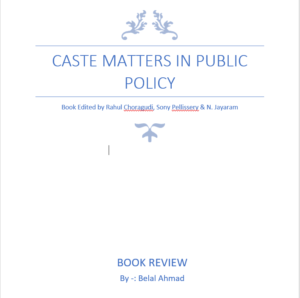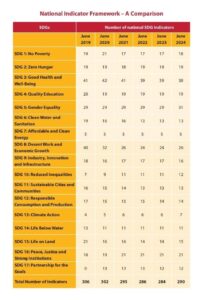Introduction (Paiman Riazat) The question of Palestinian statehood is and has been a for decades controversial matter. The main conclusion is that Palestine seems to satisfy all the four traditional criteria mentioned in the issues of recognition such as people, land, government, and capacity (Montevideo Convention, 1933). However, Palestine has these requirements; its legal status remains in vogue for the sake of political and historical conditions. As January 2025 begins the situation in Palestine is still unknown. The war between Israel and Palestinian groups in Gaza has resulted in significant casualties and destruction. The United Nations has reported that over 46,000 Palestinians have lost their lives and many more have been injured or displaced (United Nations, 2024). Gaza is home to approximately 2.3 million people and continues to endure a strict blockade imposed by Israel since 2007 (Amnesty International, 2024). In 2012, the United Nations General Assembly granted Palestine non-member observer state status (United Nations General Assembly, 2012). This recognition has allowed Palestine to join international organizations and participate in international legal proceedings, such as the International Criminal Court (ICC) (International Criminal Court, 2021). This paper aims to effectively analyze the recognition of Palestine’s statehood in international law, discovering the legal arguments for and against its recognition. By bringing up the Montevideo criteria and the current situation on the ground, this research seeks to provide an extensive understanding of Palestine’s legal status in international law. Background (Cherry Wong) International law is a set of rules and principles that governs the relations between states and other international actors (Legal Information Institute, n.d.). It comprises treaties, customary practices, legal precedents etc. that establish obligations and rights for states to adhere to (Butchard, 2020). The aim of international law is to maintain global peace and security, addressing issues such as human rights, trade, and environmental protection (United Nations, n.d.). It is enforced through various mechanisms, emphasizing both state responsibility and the roles of international institutions (Iwasawa, 2023). Palestine’s historical context is characterized by a long struggle for self-determination amidst colonial and geopolitical challenges. The Palestinian national movement began in the early 20th century, with significant events such as the 1920 Palestinian National Council demanding independence from British rule, which was largely ignored due to the British commitment to the Balfour Declaration favoring Jewish immigration and settlement (Boulos & Abu Eid, 2024). The 1947 UN Partition Plan proposed separate Jewish and Arab states, leading to the 1948 Arab-Israeli War and the Nakba, which resulted in the displacement of hundreds of thousands of Palestinians (Utrecht University, 2024). The quest for statehood continued with the establishment of the Palestine Liberation Organization (PLO) in 1964, which became the representative body for Palestinians (Powell & Strug, 2016). The PLO declared the State of Palestine in 1988, gaining recognition from numerous countries and the UN General Assembly, which granted it non-member observer state status in 2012 (Powell & Strug, 2016). Despite this, the ongoing Israeli occupation and settlement policies complicate the realization of Palestinian statehood (Boulos & Abu Eid, 2024). International law defines statehood criteria primarily through the Montevideo Convention, which stipulates that a state must possess a permanent population, a defined territory, a government, and the capacity to engage in relations with other states (Fang, 2023). Recognition by other states is essential, as international relations are built upon the acknowledgment of a state’s sovereignty. While Palestine has been recognized by approximately 146 countries, its quest for full statehood remains hindered by geopolitical dynamics, particularly the influence of the United States and the ongoing Israeli-Palestinian conflict (The Hindu, 2024). The significance of recognition in international law (Tasnuba Tasnim Anita) Recognition refers to the formal acknowledgment by one state of the existence and sovereignty of another state within the global community. In international law, statehood is traditionally determined by the Montevideo Convention of 1933, which outlines four criteria: a permanent population, a defined territory, a government, and the capacity to enter into relations with other states (Montevideo Convention, 1933). However, recognition by other states often solidifies and legitimizes a state’s legal standing in the international arena. But recognition is not a prerequisite for statehood, it facilitates the newly established state’s ability to participate in international organizations, treaties, and diplomatic engagements (Roth, 2010). Diplomacy often revolves around recognizing states to foster alliances, resolve disputes, and promote stability. Conversely, withholding recognition can serve as a form of protest or leverage in international negotiations. The process of recognition is rarely free of political influence. States may base their recognition decisions on strategic interests, ideological alignments, or economic incentives. This selective approach can lead to inconsistencies (Christopher J Borgen, 2009). Recognition of states in international law can take two primary forms: de jure and de facto recognition (Cochran, C. L.1968). De jure recognition is often permanent and implies that the recognized state satisfies all the criteria of statehood, including effective control and governance. It refers to the formal and unequivocal acknowledgment of a state’s sovereignty and legal personality under international law. De facto recognition often occurs in situations where a state has effective control over a territory but faces unresolved issues regarding its legitimacy or sovereignty (Briggs, H. W. 1939). It implies that while the recognizing state acknowledges the factual existence of the entity as a governing authority, it does not grant full legal legitimacy or permanence (Houghton, N.D, 1932). The case of Palestine illustrates the nuanced application of de jure and de facto recognition in international law. Over 130 UN member states have granted Palestine de jure recognition, acknowledging its sovereignty and right to statehood under international law (Ghaedi, M. 2024). Conversely, many states, including major powers like the United States, have limited their acknowledgment to de facto recognition, if at all (Al Jazeera, 2024). The recognition of Palestine is often viewed through the lens of the broader Arab-Israeli dispute, making it a symbol of regional and global political divisions (Palestine Unbound, 2016). The case of Palestine highlights the significance of recognition in shaping the legal and political realities of statehood under











